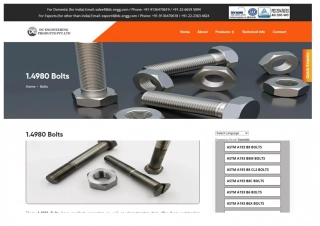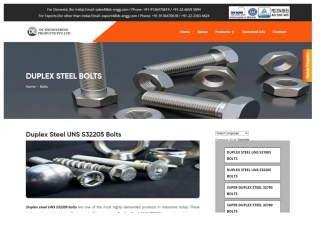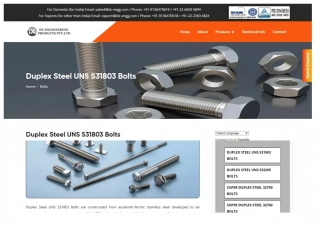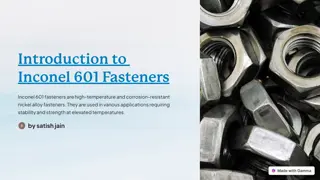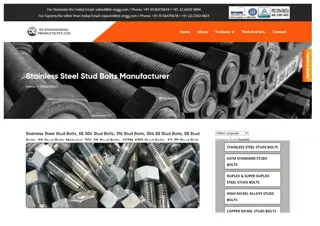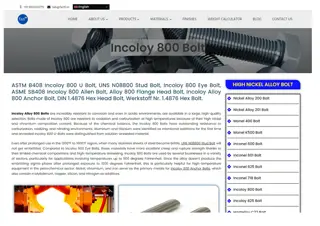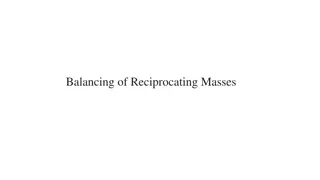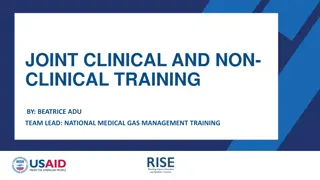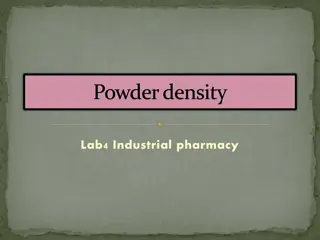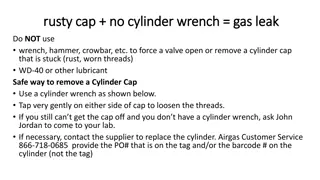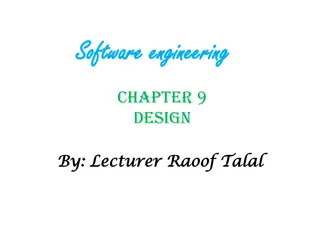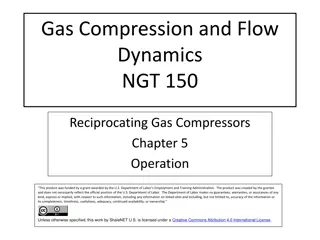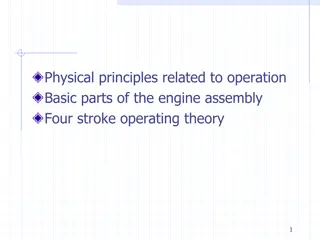Design and Application of Bolts in Cylinder Covers
Cylinder covers play a crucial role in engineering applications, being secured by bolts or studs. This content explores the design considerations for securing cylinder covers, including the number and size of bolts/studs needed based on pressure and material strength. It delves into the calculation methods to ensure a leak-proof joint and prevent bolt failure under pressure. Practical examples are provided to illustrate the concepts discussed.
Download Presentation

Please find below an Image/Link to download the presentation.
The content on the website is provided AS IS for your information and personal use only. It may not be sold, licensed, or shared on other websites without obtaining consent from the author.If you encounter any issues during the download, it is possible that the publisher has removed the file from their server.
You are allowed to download the files provided on this website for personal or commercial use, subject to the condition that they are used lawfully. All files are the property of their respective owners.
The content on the website is provided AS IS for your information and personal use only. It may not be sold, licensed, or shared on other websites without obtaining consent from the author.
E N D
Presentation Transcript
Bolts Design Application Lec.8 Dr. Ameer Ali Kamel Prod.Eng.& Mech. Design Dept. Faculty of Engineering
Design of Cylinder Covers The cylinder covers may be secured by means of bolts or studs, but studs are preferred. The possible arrangement of securing the cover with bolts and studs is shown in Fig. 1. Design of bolts or studs Let, D = Diameter of the cylinder, p = Pressure in the cylinder, dc = Core diameter of the bolts or studs, n = Number of bolts or studs, tb = Permissible tensile stress for the bolt or stud material.
The upward force acting on the cylinder cover ( Force due to liquid or gas), ? =? ???? This force is resisted by n number of bolts or studs provided on the cover. The resisting force offered by n number of bolts or studs, ? =? ??? Therefore, ? ???? =? ???? ? ???? ? ???
From the above equation, the number of bolts or studs may be obtained, If the value of n as obtained from the above relation is odd or a fraction, then next higher even number is adopted. The bolts or studs are screwed up tightly, along with metal gasket or asbestos packing, in order to provide a leak proof joint. Note that, due to the tightening of bolts, sufficient tensile stress is produced in the bolts or studs. This may break the bolts or studs, even before any load due to internal pressure acts upon them. Therefore a bolt or a stud less than 16 mm diameter should never be used
The tightness of the joint also depends upon the circumferential pitch of the bolts or studs. The circumferential pitch should be: ???? ?????= ( ?? ??) ?? where: d1 : is the diameter of the hole in mm for bolt or stud. The pitch circle diameter (dp) is usually taken as: ??????= ? + ? ? + ? ?? The outside diameter of the cover is kept as: ??= ??+ ? ??= ? + ?? + ??? Where: t = Thickness of the cylinder wall
Example: The cylinder head of a steam engine is subjected to a steam pressure of 0.7 N/mm2. It is held in position by means of 12 bolts. A soft copper gasket is used to make the joint leak-proof. The effective diameter of cylinder is 300 mm. Find the size of the bolts so that the stress in the bolts is not to exceed 100 MPa. Solution: Given: p = 0.7 N/mm2 ; n = 12 ; D = 300 mm ; t = 100 MPa = 100 N/mm2
The external load acting on the cylinder head i.e. acting on all the bolts (12 Bolts) is: ? =? ??? ? =? ???? ?.? = ????? ? ? The external load acting on the cylinder head per bolt : ??=????? = ???? ? ?? Let d = Nominal diameter of the bolt, and dc = Core diameter of the bolt. Therefore, the initial tension due to tightening of bolt, P1 = 2840 d N ... (where d is in mm)
From the following table: K = 0.5. i.e., for soft copper gasket with long through bolts, the minimum value of K = 0.5. Resultant axial load on the bolt,
? = ??+ ? ?? = ????? + ?.? ???? = ???? ? + ???? ? The load on the bolt (P): ???? ? + ???? =? ??? ?? ? ? ??.?? ?? ??? = ??.??? = (taking dc=0.84 d) ??.? ?? ???? ? ???? = ? ?? ??.?? ??.? = ? ? =??.? ?? ??.??+ ? ??.? ? =??.? ??.? = ?? ?? The bolt size is M52 ?
2. Design of cylinder cover plate The thickness of the cylinder cover plate (t1) and the thickness of the cylinder determined as discussed below: (t2) flange may be Let us consider the semi-cover plate as shown in Fig. The internal pressure in the cylinder tries to lift the cylinder cover while the bolts or studs try to retain it in its position.
But the centers of pressure of these two loads do not coincide. Hence, the cover plate is subjected to bending stress. The point X is the center of pressure for bolt load and the point Y is the center of internal pressure. We know that the bending moment at A-A,
We know that the bending moment at A-A, ? =????? ???? ???? 2
Lthread = 2d + 6 L125 = 2d + 12 125 L 200 = 2d+ 25 L 200
Tension JointsThe External Load Let happens when a bolt subject to an external tensile load P . It is to be assumed, of course, that the clamping Force (the preload Fi ), has been correctly applied by tightening the nut before P is applied. us now consider what
Assume that: Fi P = External tensile load. Pb = Portion of P taken by bolt. Pm = portion of P taken by members. Fb = Pb + Fi = Resultant bolt load. Fm = Pm Fi = Resultant load on members. C = Fraction of external load P carried by bolt. 1 C = Fraction of external load P carried by members. = Preload.
The load P is tension, and it causes the connection to stretch, or elongate, through some distance . This elongation can be related to the stiffness by recalling that k is the force divided by the deflection. Thus: ? =?? ?? ?? ?? and ? = ?? ?? ??= ?? Since P = Pb + Pm And, Pm = P Pb = (1-C)P
Relating Bolt Torque to Bolt Tension High preload is very desirable in important bolted connections. Next, it is important to consider the means of ensuring that the preload is actually developed when the parts are assembled. If the overall length of the bolt can actually be measured with a micrometer when it is assembled. The bolt elongation due to the preload Fi can be computed using the formula: = Fi l/(AE) Then the nut is simply tightened until the bolt elongates through the distance .
This ensures that the desired preload has been attained. The elongation of a screw cannot usually be measured, because the threaded end is often in a blind hole. [[[It is also impractical in many cases to measure bolt elongation.]]] In such cases the wrench torque, required to develop the specified preload, must be estimated. Then torque wrenching, pneumatic-impact wrenching, or the turn-of-the-nut method may be used.



